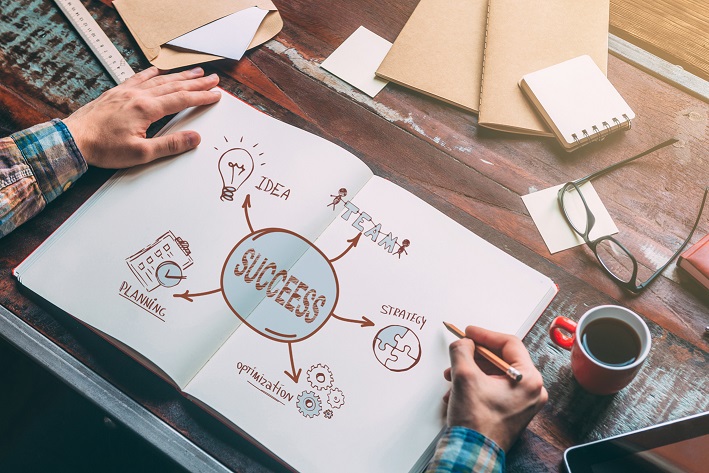First things first: focus on the main elements
As a new student of the university or college, you will encounter enormous amounts of materials and information. When you plan your new semester, focus on your main classes and try to study from the handbooks. It seems easier to obtain or buy the teacher’s notes or copy your classmates’ drafts, but these never give you a vision about your future profession. Researchers say studying with the printed handbook of the course makes you concentrated while circling or underlying specific parts of the text with a pen stimulate your brain for memorizing. The benefit of these books will come later when you acquire a basic understanding of the subject and after reading multiple case studies to support your knowledge with them.
Make your mind map
A mind map is an easy way to brainstorm thoughts organically without worrying about order and structure. It allows you to visually structure your ideas to help with analysis and recall. A mind map is a diagram for representing tasks, words, concepts, or items linked to and arranged around a central concept or subject using a non-linear graphical layout that allows the user to build an intuitive framework around a central concept. A mind map can turn a long list of monotonous information into a colourful, memorable and highly organized diagram that works in line with your brain's natural way of doing things. You can grab your colour pens and a big sheet of paper and let your brain…storm!

Be other’s professor or explain it like I’m 5
Students have better memory and recall abilities when they learn new information with the expectation of having to teach it to someone else. This makes sense, as teachers are charged with not only learning information for themselves but also with organizing key elements of said information to explain it clearly to others. This can be especially effective with subjects like reading comprehension and science. When you live in a dormitory and share your room with students of other study programmes, try to cooperate, ask each other what they have studied that day and try to explain the new information in 5 minutes like they were 5-year-olds.

Questioning and practice test to know your “enemy”
Thinking on a good question can inspire you to search and read more to answer it. Close to the exam term take advantage of professors and instructors who make old exams available as practice tests. You can get a sense of the instructor’s testing style and become familiar with how the information might be presented on the real test day. Usually, students use mock test for language exams, where they want to save time for focusing on the question, not the structure of the exam. Practising the test and planning real goals will lighten your load and you can hit the target much more effectively.
Record your findings or write a song
Traditionally, the writing, reading, re-writing, and re-reading of notes was the go-to study method, but with today’s tech, you can use audio recording to your advantage. Recording yourself and playing it back again while you get on with your day is a great way to offload information, clear your mind, and start absorbing it all over again. When you study with your classmates you can make interviews with each other or create news articles on the studied materials. If you’re under pressure and close to the exam term, you can improvise lyrics about the exam topics as well which will make you focused on the subject.

The mythical Feynman Notebook method
Physicist Robert Feynman created this organization-based learning method by writing on the title page of an empty notebook the things you don’t know. From there, he developed a technique of deconstruction and reconstruction of ideas, in an effort to understand even the most complicated of concepts. To use this method and learn how to study effectively, first identify what you want to learn. Then, try explaining it as you would to a five-year-old. The Feynman method is ideal for using analogies to further illustrate your concept (e.g., a bonsai tree is just like a big tree, but smaller).
These are not the only methods out there: feel free to explore and be confident with trying them, just be careful not to overlearn! Remember: if it doesn’t work for you, just try another one. The first time is always tiring but it will only get easier after that so don’t forget: the success is in not giving up until you know the things you need to learn.
Links and sources: LinkedIn: How to Learn Anything Faster With The Feynman Technique